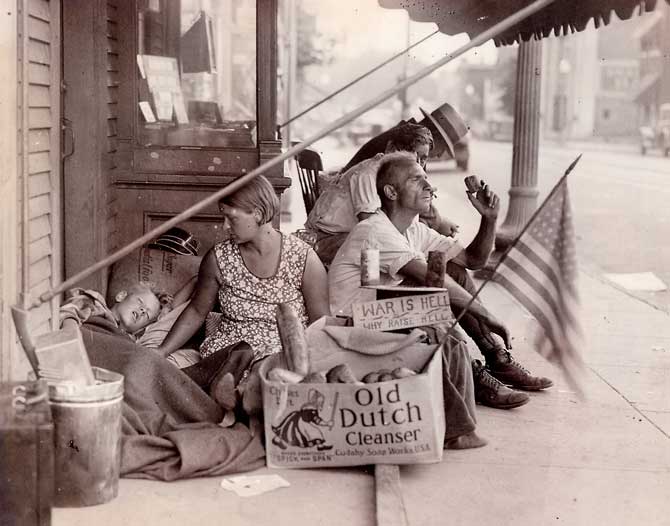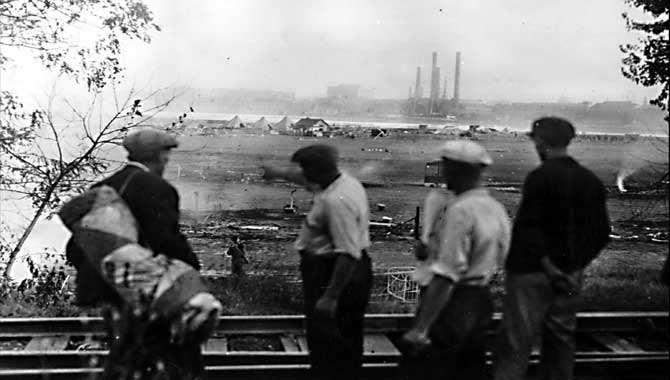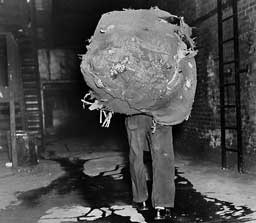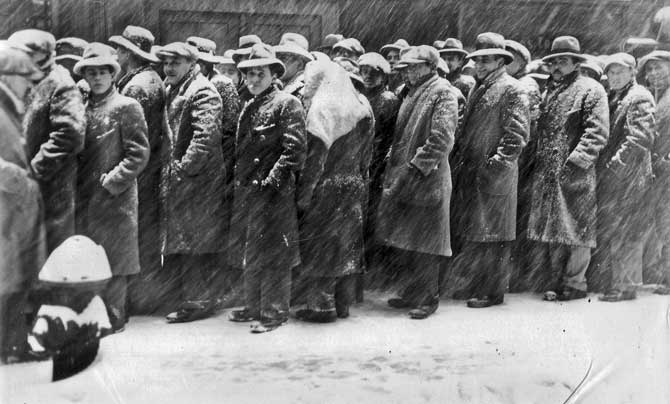The Great Depression ~ 1929–1939
In the first ten months of 1930, 744 banks failed as a result of uncollectible loans. In all, over 9,000 banks would fail during the depression years of the 1930’s while draining over 140 billion dollars in depositors savings due to uninsured bank debt. Unemployment
climbed to over 25% with incomes falling nearly 50%, forcing industry to cut jobs and reduce or stop production. This vicious cycle continued and the downward spiral accelerated. Farms, banks, stores and factories were closed and left millions of unsuspecting Americans jobless, homeless and penniless. Many had to depend on charity and the local government just to obtain food. Eddie Jackson documented much of this personal tragedy; very similar to his childhood years growing up in Philadelphia. The following photographs have never been published.
The worst and longest economic collapse in history, the depression spread to most of the world’s industrialized countries like a firestorm. The depression saw rapid declines in the production and sale of goods throughout the world, and as a result, an extremely high rise in unemployment. Businesses and banks closed their doors, millions of jobs were lost, leaving many without homes, savings or even food. In 1933 alone, more than 15 million Americans—over 1/4 of the nation’s workforce, were unemployed — especially in urban areas and cities that once had many manufacturing, factories and building/construction jobs.
Displaced unemployed workers travel by train as ‘hobo’s’ to work camps in Pennsylvania.
1933 New York City ~ Hundreds of men stand in line during one of the city’s worst blizzards to get a job shoveling snow. Photo by Eddie Jackson.

Many experts attribute the depression principally to consumer overspending and irresponsible use of newly obtained consumer personal credit. Others state that it was caused by a prevalent imbalance of earnings: the rich got richer while the average working American spent much more than they actually made. All agree however, that poor economic conditions led directly to the election of Franklin Delano Roosevelt and his “New Deal” programs, designed to help lessen the disastrous impact that the depression had on many. The “New Deal” programs initiated by President Roosevelt quickly expanded government intervention into many areas of social and economic areas not previously controlled or even monitored, and created social-assistance programs that are in effect today. Warmly embraced by labor unions, blue collar workers and minorities these programs ushered in a substantially strengthened Democratic Party.

The photo above is of a WWI veteran and his family, homeless and living on a New York City street.





